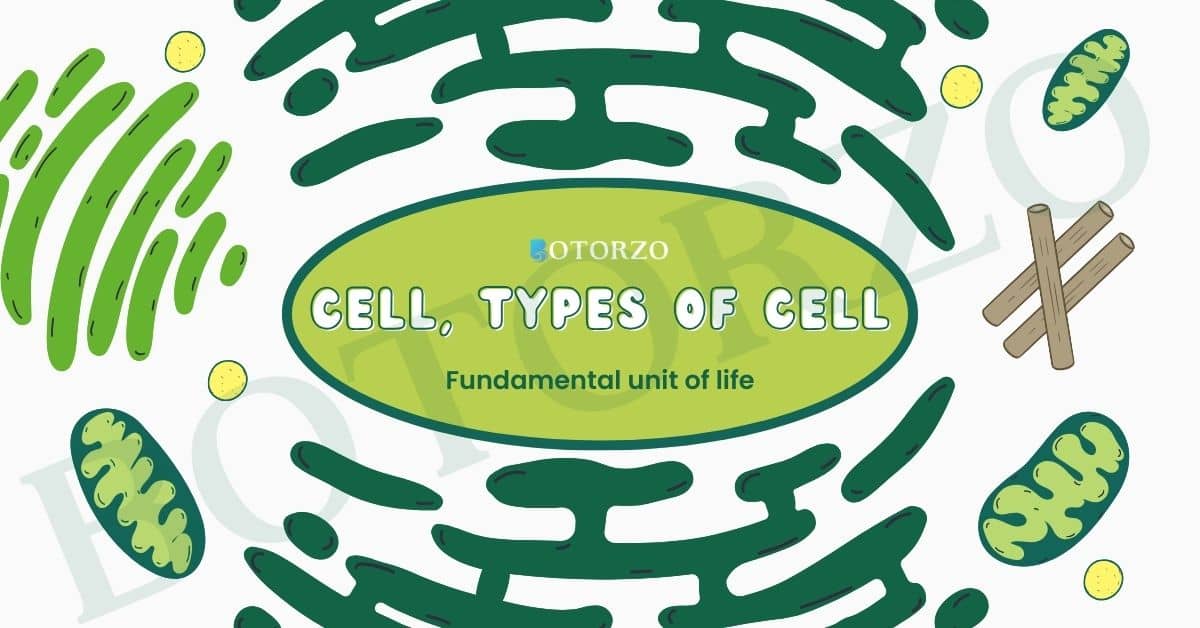What is a cell? : Cells are the basic units of life and the smallest functioning components of all living creatures. They serve as the foundation of life and are frequently referred to as the “basic structural and functional units of an organism.” These amazing microscopic beings are in charge of all the operations that keep life going, from energy production to reproduction and growth.
Cell biology, often known as cytology, has revolutionized our knowledge of life itself. Cells are at the heart of all living things, whether they are single-celled organisms like bacteria or complex multicellular structures like plants, animals, and people. Their diversity, complexity, and specialized roles make them a subject of endless intrigue and scientific research. We will dig into the fascinating world of cells in this article, analyzing their structure, functions, and the critical roles they play in the existence of all life forms.
The invention of magnifying lenses made the microscopic world visible. Some unicellular organisms exist as single cells, such as Amoeba, Chlamydomonas, Paramoecium, and bacteria, whereas multicellular organisms, such as certain fungi, plants, and animals, are made up of multiple cells with distinct functions. Unicellular organisms are abundant, and cell division is the origin of all life, whether single-celled or multicellular.
What is a cell?
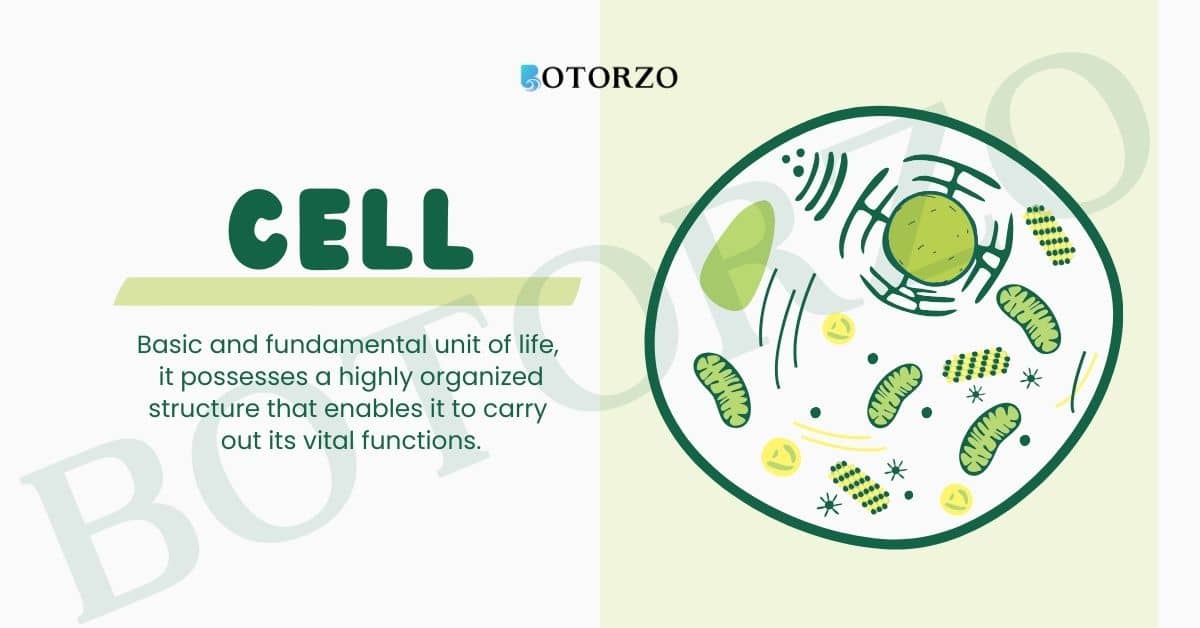
A cell is the basic unit of life, a microscopic creature that performs critical processes in all living organisms. Because they are the tiniest, self-contained units capable of maintaining life’s functions, these extraordinary structures are often referred to as the building blocks of life. Cells are extremely diverse, adapting to specialized jobs in distinct animals, and they exist in a variety of shapes, sizes, and functions.
A cell, at its heart, is a complex system designed for the survival and functionality of the organism to which it belongs, performing functions such as collecting and utilizing energy, responding to stimuli, reproducing, and maintaining a stable internal environment. It is surrounded by a protective cell membrane and contains specialized organelles that work together to ensure the cell’s survival and allow it to perform its specific responsibilities.
Furthermore, cells have molecular complexity because they include genetic material, often in the form of DNA, which is housed in the nucleus, which is commonly referred to as the control center and directs processes like growth and reproduction. Understanding these complexities is critical for understanding the bigger biological processes that all living species contribute to.
Discovery of cell
In 1665, Robert Hooke observed a thin slice of cork that resembled a honeycomb, with numerous small compartments. Cork, which is derived from tree bark, was the material under his scrutiny.
This chance discovery was made possible by Hooke’s self-designed microscope. He aptly named these compartments “cells,” after the Latin word for “a small room.”
While this incident may appear insignificant, it was the first observation of living things appearing to be made up of separate units. The term ‘cell’ is still used in biology, emphasizing the historical significance of Hooke’s discovery.
types of cell
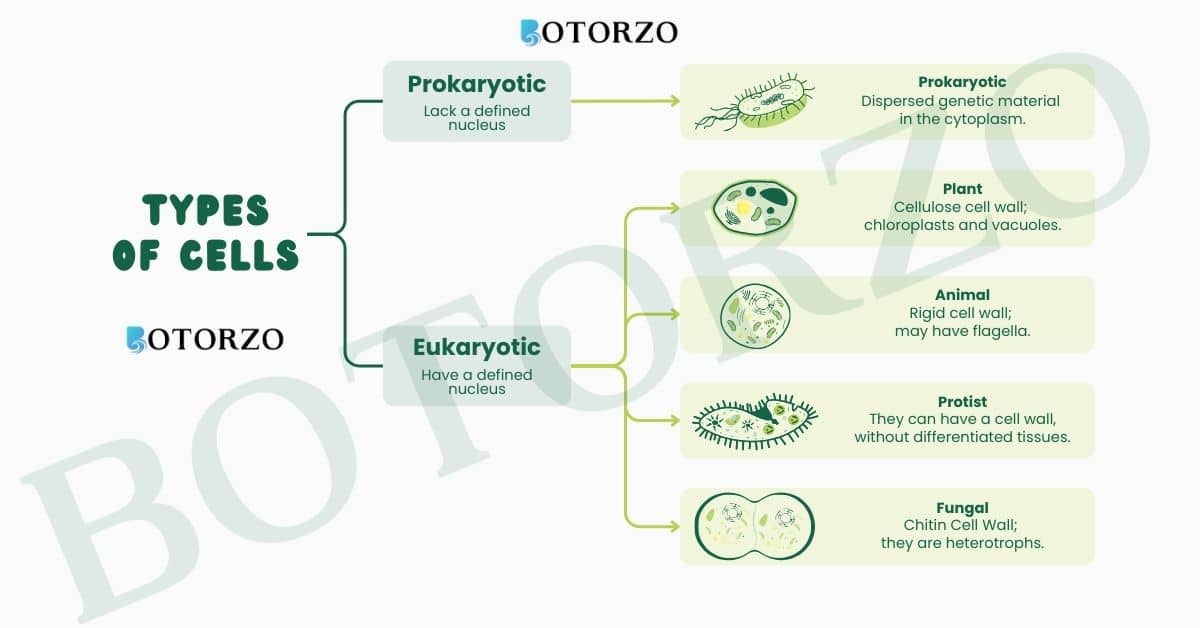
Cells are classified into two types: prokaryotic and eukaryotic cells. Prokaryotic cells are found in organisms such as bacteria and lack a well-defined nucleus as well as complex internal structures. Eukaryotic cells, which are found in plants, animals, and humans, have a distinct nucleus surrounded by a membrane and a variety of organelles that perform specific functions. The fundamental structural differences that underpin the diversity of life on Earth are reflected in these two main cell types.
- Prokaryotic cells
- Eukaryotic cells
| Characteristic | Prokaryotic Cells | Eukaryotic Cells |
|---|---|---|
| Nucleus | Poorly defined nuclear region (nucleoid) | A well-defined nucleus enclosed by a nuclear membrane (nuclear envelope) |
| Organelles | Lack most cytoplasmic organelles | Possess various cytoplasmic organelles |
| Chlorophyll Organization | Associated with membranous vesicles | Associated with plastids |
| Size | Variable sizes (1-10 µm or 5-100 µm) | Variable sizes (1-10 µm or 5-100 µm) |
| Number of Chromosomes | Typically, a single chromosome | Multiple chromosomes (more than one) |
| Membrane-Bound Organelles | Lacks membrane-bound organelles | Contains membrane-bound organelles |
| Examples | Bacteria, Archaea, and Cyanobacteria | Animals, Plants, Fungi, and Protists |
Prokaryotic Cells
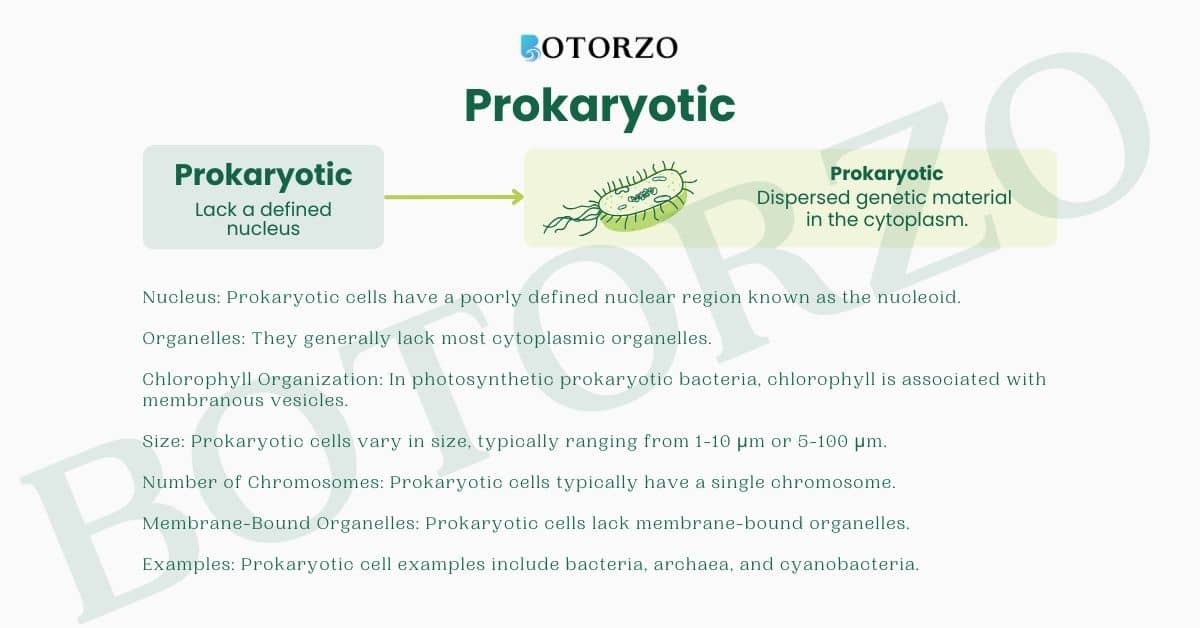
- Nucleus: Prokaryotic cells have a poorly defined nuclear region known as the nucleoid.
- Organelles: They generally lack most cytoplasmic organelles.
- Chlorophyll Organization: In photosynthetic prokaryotic bacteria, chlorophyll is associated with membranous vesicles.
- Size: Prokaryotic cells vary in size, typically ranging from 1-10 µm or 5-100 µm.
- Number of Chromosomes: Prokaryotic cells typically have a single chromosome.
- Membrane-Bound Organelles: Prokaryotic cells lack membrane-bound organelles.
- Examples: Prokaryotic cell examples include bacteria, archaea, and cyanobacteria.
Read more About Science
eukaryotic Cells
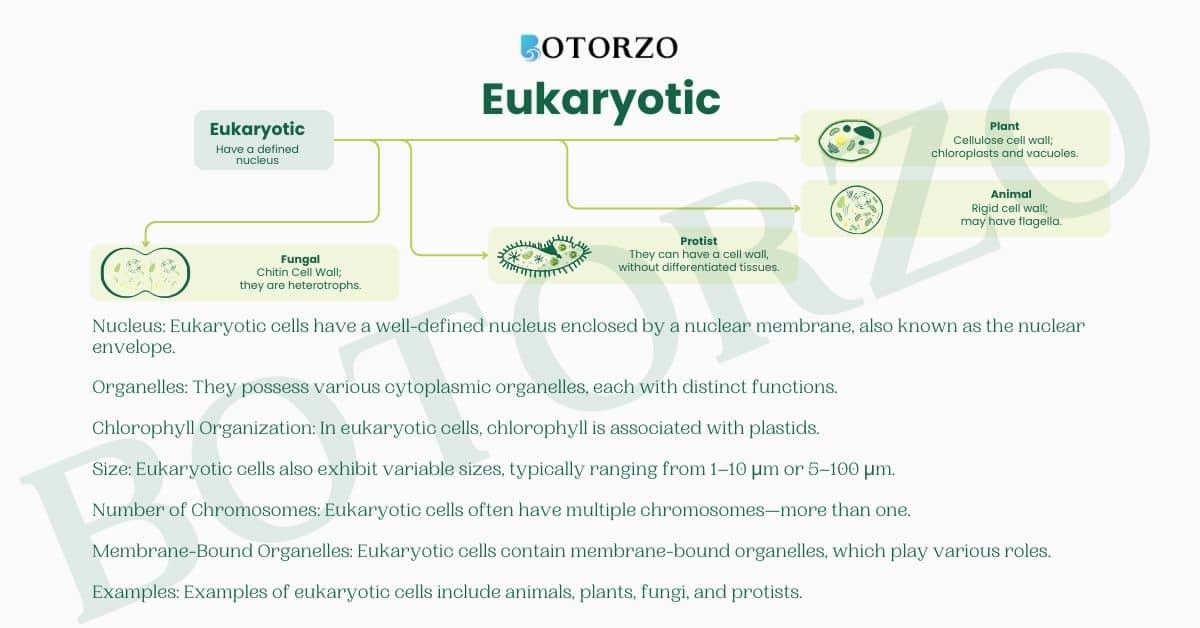
- Nucleus: Eukaryotic cells have a well-defined nucleus enclosed by a nuclear membrane, also known as the nuclear envelope.
- Organelles: They possess various cytoplasmic organelles, each with distinct functions.
- Chlorophyll Organization: In eukaryotic cells, chlorophyll is associated with plastids.
- Size: Eukaryotic cells also exhibit variable sizes, typically ranging from 1–10 µm or 5–100 µm.
- Number of Chromosomes: Eukaryotic cells often have multiple chromosomes—more than one.
- Membrane-Bound Organelles: Eukaryotic cells contain membrane-bound organelles, which play various roles.
- Examples: Examples of eukaryotic cells include animals, plants, fungi, and protists.
Read About Engineering
What is a cell, and why is it important?
A cell is the smallest part of life and does all the vital jobs to keep living things alive.
What do cells do in living things?
Cells do essential jobs like making energy, reacting to things, having babies, and keeping everything inside just right.
Why is cell biology important in studying life?
Cell biology helps us understand how life works, from the smallest cells to the biggest creatures.
How are cells different in shape and size?
Cells come in all sorts of shapes and sizes to do different jobs.
What’s inside a cell, and what’s DNA for?
Cells have a special thing called DNA that tells them what to do and helps them grow and have babies.
Who found cells, and why was it a big deal?
A long time ago, someone named Robert Hooke saw tiny rooms in cork and called them cells. This was the first clue that all living things are made of tiny pieces.
What are the two main types of cells, and how are they different?
There are two kinds of cells: prokaryotic and eukaryotic. Prokaryotic cells, like bacteria, don’t have a clear center, and eukaryotic cells, like us, do.
Why is it important to understand different types of cells and what’s inside them?
Understanding cells helps us know how all living things work, from tiny cells to big creatures, and helps scientists study life.

